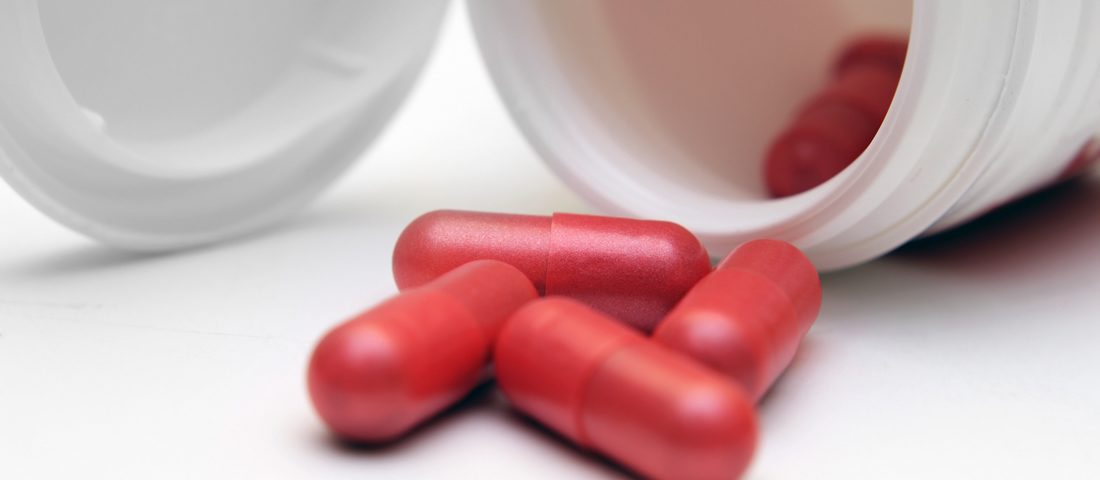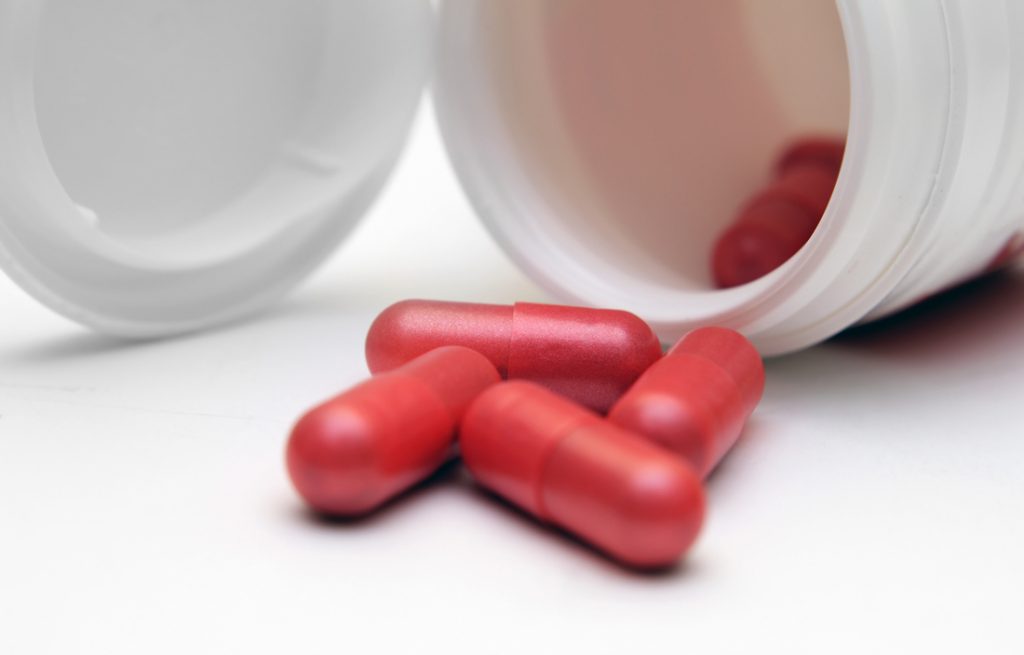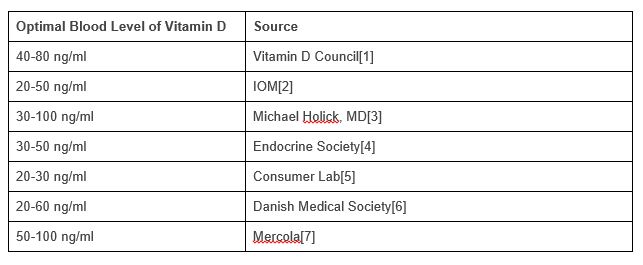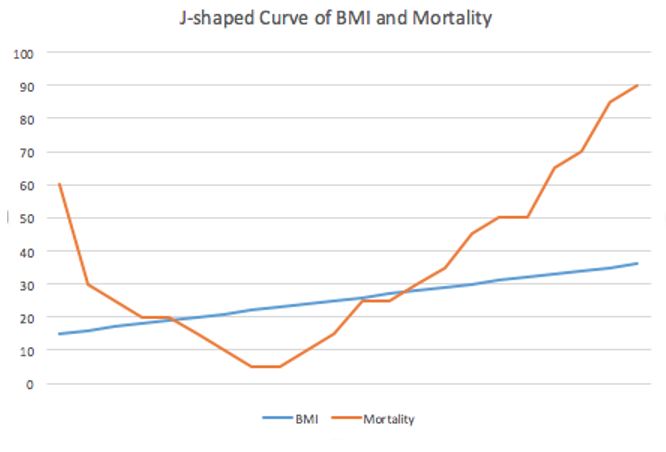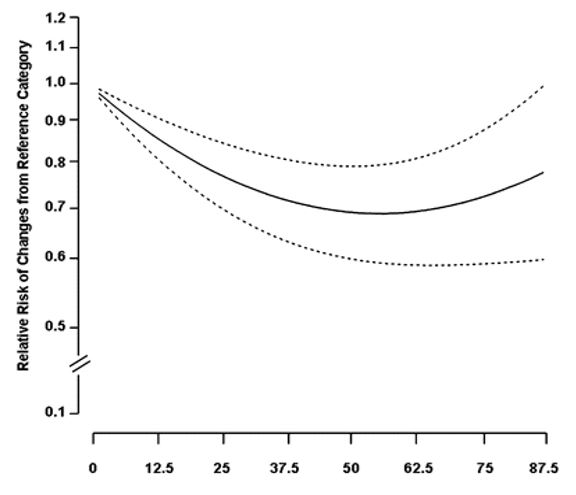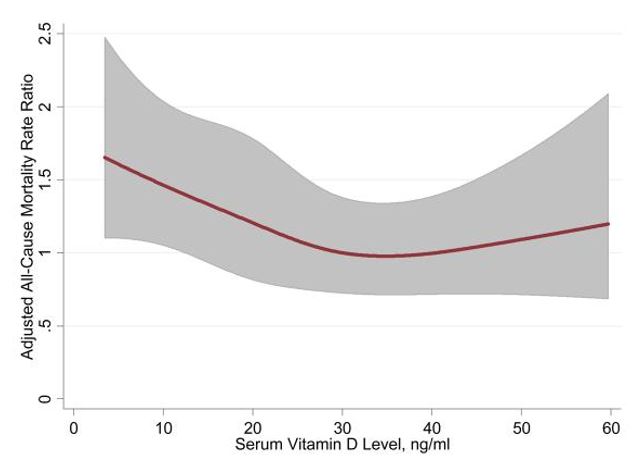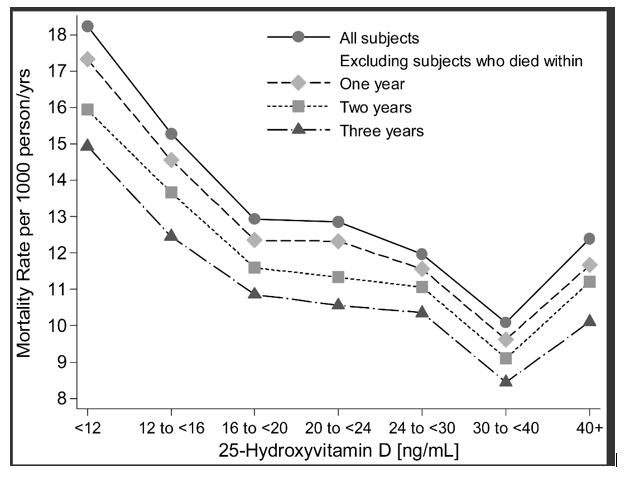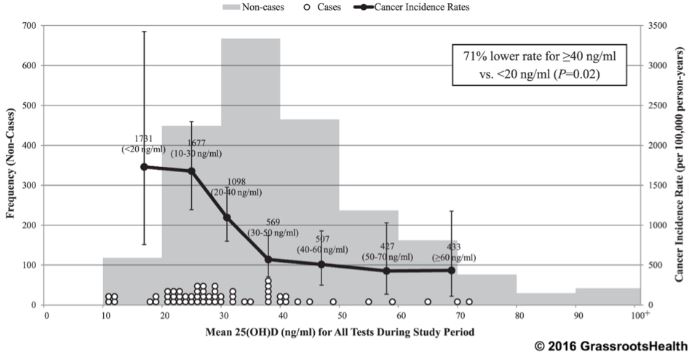You want to be in the bottom of the J-shaped curve—that’s the sweet spot with the least risk of death.
Nutrients and hormones are normally found in the human body. When we compare how they work in the body with how much we have, a common trend emerges. When the substance is too low, something doesn’t work. As the levels improve, the function gets better, to a point. As the levels get higher, it eventually becomes too much, and things start to get worse again.
We see the same thing for nearly all nutrients studied. If you have too little iodine, your thyroid can slow down. Too much iodine can also slow your thyroid. If you have no vitamin C, you can get a disease, called scurvy. If you take a mega dose of vitamin C and then reduce it, you can get rebound scurvy. Too much testosterone can give a man feminization symptoms, like breast growth. Too little vitamin B6 can cause nerve damage. Guess what overdosing on B6 does? Yes, it causes nerve damage.
What is the sweet spot for Vitamin D and longevity?
The largest single study to date focused on cardiovascular deaths, primarily heart attack and stroke. In it, 247,574 people were monitored for seven years. The population was tracked for vitamin D levels, and these were compared to cardiovascular death.
Results showed death risks were highest for both those lowest and those highest in vitamin D. The lowest risk of death was found in those with vitamin D levels of 30-49 ng/ml, based on the author’s conclusions.8
A large review of several other studies on vitamin D and mortality came to similar conclusions. In it, researchers combined studies, totaling 62,548 people, who were studied for death risk and vitamin D levels. The image below summarizes these studies.




